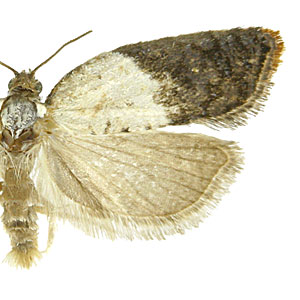Acleris variegana (Denis & Schiffermuller) (Tortricidae: Tortricinae: Tortricini)
Common names: garden rose tortrix
Synonyms: albana (Peronea), alpicolana (form), argentana (form), asperana (Pyralis), blandiana (Tortrix), brunneana (form), caeruleoatrana (ab.), cirrana (Peronea), costimaculana (Peronea), fuscana (form), insignata (Tortrix), nyctemerana (Tortrix), osbeckiana (Tortrix), uniformis (ab.)










